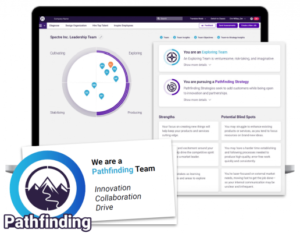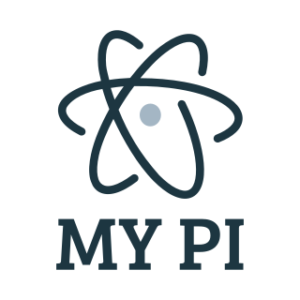
What is Team Discovery by The Predictive Index?
Unlock the full potential of your team with data-driven insights from Team Discovery™, helping you build a cohesive, high-performing unit aligned with your strategic goals.
Reading Time: 10 minutes
Navigating the skies as a pilot for the first time can be both exhilarating and daunting, filled with a mix of anticipation and uncertainty. The same can be said for new hiring managers stepping into the interview cockpit for the first time. It’s a challenging role, requiring an array of skills and a sound judgement to land the right talent for your team.
But just as pilots don’t become seasoned overnight, new hiring managers too are not expected to take off perfectly from day one. It’s all part of the learning curve, a journey that every hiring manager, like every pilot, embarks upon.
Yet, while being new at the controls, it’s crucial to have a clear map of the potential turbulence ahead. In the hiring flight path, these are often the pitfalls and unconscious biases that could divert you from your course, leading to costly hiring mistakes.
Much like the invisible wind currents that can buffet a plane off course, these biases are often unseen, subtly influencing our decisions and steering us away from the right hire. As we prepare for take-off on this journey, understanding these biases and pitfalls becomes as essential as the pre-flight checklist for a pilot.
Just as a pilot learns to understand and predict weather patterns and turbulence to ensure a smooth flight, new hiring managers must also learn to identify and navigate unconscious biases in their interviewing process. These biases, though invisible, can create their own form of turbulence in your hiring journey.
So, what are these unconscious biases? Let’s explore a few common ones:
The consequences of these biases are not trivial. It’s like flying into a storm without realising it; you might reach your destination, but the journey could be fraught with unnecessary risk and turbulence. In a hiring context, these biases can lead to misjudged appointments, fostering an environment lacking in diversity, and potentially higher employee turnover.
Research has shown that biased hiring can lead to a less diverse workforce, which in turn impacts innovation. According to a report by McKinsey, companies in the top quartile for racial and ethnic diversity are 35% more likely to have financial returns above their industry mean. Similarly, the same report revealed that companies in the top quartile for gender diversity are 15% more likely to have financial returns above their respective national industry medians.
Moreover, unconscious biases can lead to hiring people who are not the best fit for the role, resulting in decreased productivity and increased turnover rates. For instance, a study by the Society for Human Resource Management (SHRM) found that turnover due to poor culture fit can cost an organisation between 50-60% of the person’s annual salary.
In the next section, we’ll tackle some of the common interview mistakes tied to these biases and provide some strategies to navigate around these metaphorical icebergs. Stay tuned!

Much like piloting a plane, conducting an interview involves a complex interplay of skills, awareness, and decision-making. And just as even minor errors can lead to turbulence in flight, certain common mistakes can lead to a bumpy interview process. Let’s take a closer look at these:
By recognising these common mistakes, you, as a new hiring manager, can better avoid them. In the next section, we’ll equip you with some navigational tools to help you steer clear of these errors and ensure a smoother, more successful interviewing journey. Fasten your seatbelts!

Just as an expert pilot uses a reliable flight plan, precise coordination, and accurate data to ensure a successful journey, a competent hiring manager can employ similar tactics for a fruitful hiring process. Let’s look at these steps in more detail:
By adopting these practices, you can avoid common pitfalls and elevate your interviewing skills to new heights. Next, we’ll introduce a powerful tool to make this journey even smoother – the job assessment by Predictive Index.

In the aviation world, a co-pilot shares the responsibility of navigating the aircraft, offering a second set of skilled eyes to monitor data, assess conditions and make critical decisions. In the complex world of hiring, the Predictive Index can act as your trusted co-pilot, providing valuable insights to help you navigate the hiring process more effectively.
The Predictive Index is a scientifically validated platform designed to help you optimise your hiring process. It offers a suite of talent optimisation tools, including behavioural and cognitive assessments, that can give you a deeper understanding of your candidates’ skills, personality traits, and overall fit for your organisation.
Just as a co-pilot assists the pilot by closely monitoring the instruments, the Predictive Index assesses your candidates objectively and comprehensively, reducing the risk of personal bias and helping you make more informed decisions. By revealing essential aspects of a candidate’s work style and cognitive ability, it enables you to predict their suitability for the role, their potential fit within the team, and their compatibility with the organisational culture.
Moreover, like a co-pilot who communicates effectively with air traffic control, the Predictive Index can facilitate better stakeholder involvement. By offering clear, quantifiable data, it allows stakeholders to gain a shared understanding of the candidate’s profile, fostering collaborative decision-making.
In essence, the Predictive Index empowers you to conduct more successful, bias-free interviews. It guides you through the hiring landscape, helping you avoid common pitfalls and reach your destination of building a high-performing, cohesive team.
In the next section, we’ll share a case study to illustrate the power of Predictive Index in action. Prepare for take-off!
You May Also Be Interested In
If you’re striving for career growth, having a Career Portfolio is non-negotiable. It’s not just a collection of your work but your professional narrative that showcases your growth, your core values, strengths, and talents integrated with your experience, education, and passion projects.
Let’s taxi down memory lane to when a leading medical technology company was looking for a new Marketing Director. In this industry, a steady hand at the helm is vital, just as a pilot’s steady hand is key to landing a plane smoothly.
Faced with numerous high-quality applicants, the hiring team, like pilots navigating through a storm, felt somewhat overwhelmed. They turned to the Predictive Index as their reliable co-pilot, seeking to ensure an objective, data-driven hiring process.
Upon implementing the Predictive Index, they were able to conduct thorough behavioural and cognitive assessments on the candidates that applied. The clear, quantifiable data provided a shared understanding among stakeholders and helped counteract any unconscious bias.
This specific instance involved a candidate who, on paper, appeared less experienced than other applicants. However, their Predictive Index assessment showed a strong alignment with the behavioural and cognitive demands of the role. They demonstrated strategic thinking, excellent communication skills, and an impressive capacity to adapt to change – all crucial traits for navigating the ever-evolving landscape of medical technology.
Buoyed by the insights from Predictive Index, the company decided to hire this candidate. The result? An incredibly successful hire. After just one year, the new Marketing Director had led the team to exceed their annual targets by 15%, increased market share, and significantly enhanced the company’s brand presence.
This success story serves as a testament to the power of data-driven hiring. By using the Predictive Index as their co-pilot, the company was able to see beyond the surface, make an informed decision, and ultimately land the perfect candidate for the role.
Just as a pilot reviews their flight path and learns from each journey, it’s important for new hiring managers to understand and learn from the common pitfalls of the interview process. Whether it’s relying too heavily on first impressions, overlooking the crucial aspect of team fit, or failing to involve important stakeholders, these mistakes can result in costly hiring missteps.
But fear not. Like a pilot equipped with an advanced navigation system, you too have tools and strategies at your disposal to navigate these challenges. Embracing structured interviews, involving more stakeholders, and making data-driven decisions can transform your interviewing approach and outcomes.
Moreover, just as every pilot values their trusted co-pilot, the Predictive Index can become an invaluable part of your interviewing toolkit. By offering a deep dive into candidate compatibility, behavioural traits, and cognitive abilities, it provides a level of insight that even the most experienced interviewers might miss.
In the same way that our case study company made a successful hire for their Marketing Director role, you too can make great strides towards securing high-performing, cohesive teams. It’s about harnessing the power of data, flying above unconscious bias, and focusing on the right fit for your team.
Interviewing is a journey and every journey offers opportunities for learning and improvement. So, buckle up, set your course, and let Predictive Index co-pilot your next interview towards success. You’ve got the controls; now, it’s time to fly!
You May Also Be Interested In
Welcome to the world of self-awareness, an often overlooked, yet powerful facet of great leadership.
360 Talent Solutions Ltd is an Associate Partner of Humanostics® , a PI Certified Partner authorised to use the science, assessment software, and curriculum of management workshops of The Predictive Index.
In partnership with Humanostics, we provide companies in the UK and across Europe access to the assessment tools provided by The Predictive Index.
Take the 6-minute PI Behavioral Assessment™ today. Once you have completed the 6-minute assessment, I will send you a Full Behavioral Report by Predictive Index.
From supporting the growth of leading pharma companies over the past 10 years, I have learnt that when it comes to predicting future performance, technology is key:
For me, hiring without the use of psychometric assessments is like trying to put together a jigsaw puzzle with pieces missing … and no picture on the box. It’s not fun, it takes longer, and when you are almost finished, you realise you have pieces missing.
Take the assessment today and start measuring more to improve your recruitment.
If you are interested in learning more or are ready to incorporate behavioral data into your recruitment process, please contact me today, I will be happy to help.
Let’s get started!
Dave Crumby
Founder at 360 Talent Solutions
Certified Predictive Index Practitioner

Unlock the full potential of your team with data-driven insights from Team Discovery™, helping you build a cohesive, high-performing unit aligned with your strategic goals.

Explore how ‘MY PI: Using Science to Transform Your Workplace’ leverages behavioural science to revolutionise HR practices, offering in-depth insights, practical tools, and a vibrant community for HR professionals.

Join The Swiss Talent Optimisation Hub (STOH) to connect with HR professionals dedicated to leveraging Predictive Index tools and behavioural science to overcome unique challenges faced by Swiss businesses and drive organisational success.

Discover how Swiss companies can optimise their hiring and talent management strategies with the Predictive Index, a powerful tool that enhances workforce insights and decision-making, supported by Humanostics and 360 Talent Solutions.
| Cookie | Duration | Description |
|---|---|---|
| cookielawinfo-checbox-analytics | 11 months | This cookie is set by GDPR Cookie Consent plugin. The cookie is used to store the user consent for the cookies in the category "Analytics". |
| cookielawinfo-checbox-functional | 11 months | The cookie is set by GDPR cookie consent to record the user consent for the cookies in the category "Functional". |
| cookielawinfo-checbox-others | 11 months | This cookie is set by GDPR Cookie Consent plugin. The cookie is used to store the user consent for the cookies in the category "Other. |
| cookielawinfo-checkbox-necessary | 11 months | This cookie is set by GDPR Cookie Consent plugin. The cookies is used to store the user consent for the cookies in the category "Necessary". |
| cookielawinfo-checkbox-performance | 11 months | This cookie is set by GDPR Cookie Consent plugin. The cookie is used to store the user consent for the cookies in the category "Performance". |
| viewed_cookie_policy | 11 months | The cookie is set by the GDPR Cookie Consent plugin and is used to store whether or not user has consented to the use of cookies. It does not store any personal data. |